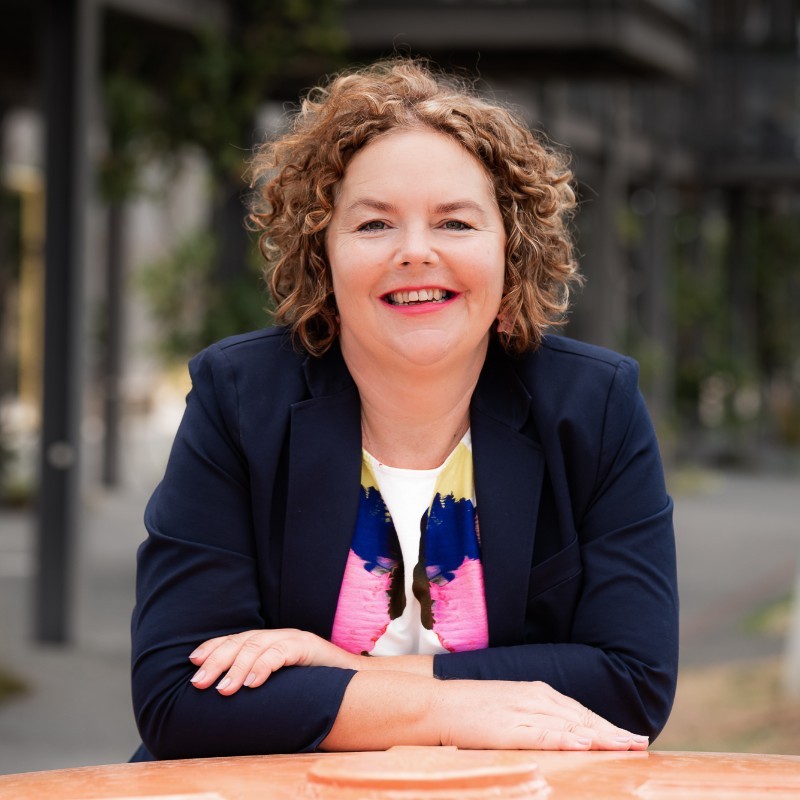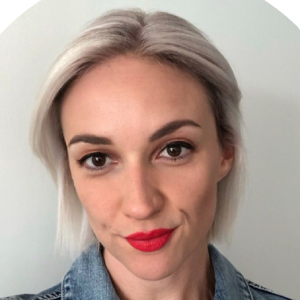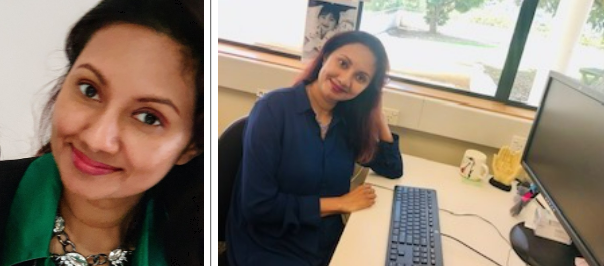Video Resources
Listen to TechWomen council member Amanda Watson demystify what it means to return to work, whether it is from a sabbatical, maternity leave, going back to school or just some downtime.
- How should you share what you have learned in your time away from work on your CV?
- What should employers look for in these non-work periods of time and how valuable are they to the health of a business?
Listen to more podcasts from The Technology Whisperers here.
Carol Brown
Sales Director – Microsoft
My real purpose, my true passion, has always been to coach, to make others as awesome as they can possibly be. I currently sit on the Microsoft New Zealand Leadership team as the Enterprise Lead. I have the incredible job of leading an amazing team who support our top customers across Aotearoa, New Zealand. If I had to choose one thing that really gets me up and active every day, it’s humans. I am passionate about working in the intersection between technology and people to drive transformation. I am an ICF Certified Leadership Coach, DISC and EQ Consultant and proud to represent Aotearoa on the Forbes Coaches Council. I love to coach and help people around the world develop their leadership muscle through building coaching cultures, communication, emotional intelligence, and modern selling.

I’m a mum, now what?
Our topic of discussion is “I’m a mum, now what?”. We cover what patterns we see in women’s careers, after they’ve become a mother.
Emma Mclean
Founder & CEO – Works For Everyone
We are New Zealand’s experts in helping employers design a return-to-work experience that works for everyone. Returning to work following a career break or parental leave is a transformational time in a person’s life and when an employer demonstrates empathy for this, they will build loyalty and engagement with their workforce.

In this video we discuss planning tips for mums who are about to go on maternity leave.
In this video we outline recommendations for mums wanting to re-enter the workforce after 12 months out or longer.
Vickie King
GM Developer Relations – Xero
Vickie has 20+ years of experience in the technology sector. She’s held senior leadership roles with fresh startups, unicorn scale-ups, incubators & accelerators, growing mid-size companies, as well as forward-thinking corporates and governments across New Zealand, Australia, and Southeast Asia.

Baby Talk: What New Mums Taught Me About Maternity Leave
I’ve been managing people and teams since 1999. Over the years I’ve had many experiences as a manager with team members trying to have children (including IVF and adoption), becoming pregnant, dealing with morning sickness and other pregnancy-related conditions, planning and taking maternity leave, and then returning back to work. Because of these experiences, I rather smugly felt that I had a reasonable grasp on what women want from their people leaders in these situations.
However, I decided to do some new digging into some of the realities, and not rely on my previous thoughts and assumptions. I engaged a small group of smart, high-performing women (and one dude) at Xero, and asked them a few important questions. Their generosity and passion in sharing their stories was inspiring. I was humbled by their responses, and by the education I received from my wonderful colleagues.
Luke, I’m (not) your father (or your mother)
I have two confessions for you: One – as you can tell from the above subheading I am a Star Wars tragic, and two – I am not a mother.
I don’t profess to know exactly how your anxious tummy feels just before you tell your busy manager that you are pregnant for the second time. I haven’t had sleepless nights feeding bubs and worrying about potentially missing out on plum promotions and fat pay rises whilst on maternity leave. I haven’t felt the oppressive stress, fatigue and overwhelm of being a newly-minted Mumma, whilst still trying to be a machine-like high-performer at work.
I haven’t had those experiences.
Now that we’ve got that out of the way, let’s look at the ways in which I can contribute constructively to the conversation around maternity leave.
Here are three learnings from my research that I’ll take forward with me in my role as a people leader:

Screaming into the void
One of my preconceptions was that maternity/parental leave was identical to taking Annual Leave in that you don’t even want to think about work, let alone have any actual contact with it. In my naivety, I thought that the very last thing someone would want was to have any contact with work, as they would be too busy with their baby and making the most of the family time.
However most of my (albeit small) sample group mentioned the intense loneliness involved in caring for infants. They spoke of joy and quality time with their baby, but also of groundhog days, disconnectedness, and feeling like their colleagues were moving on without them. Without the cushion of “mother’s groups”, men can feel particularly isolated also.
Instead of simply disappearing off the edge of the planet, understand what type, mode and frequency of contact is ideal. Prior to going on maternity or parental leave have a practical conversation about what the desired contact will be during the period away. This can help the Mum or Dad feel connected, in the loop, and relevant and important to the team.
The new Mum or Dad is firmly in the driver’s seat in this conversation. It may be a monthly phone catchup, six weekly coffee date, bi-monthly lunch date, or invites to quarterly kick offs to stay in the loop. Your mileage will vary.
Review it regularly too in case things change. Adjust accordingly.
More leave to help them stay
We know that humans need paid annual leave in order to have holidays, spend time with family, relax and unplug. However, if someone is using up all of their annual leave and sick leave because they are frequently taking care of sick little one (day care is the ultimate petri dish), this results in them not being able to take leave when they are actually sick, or when they need a break from work. This doesn’t fit well with the purpose of those leave categories, and doesn’t support the long game of keeping people well and preventing burnout.
If you can offer or negotiate additional “special” or “family” leave for new parents, this is life changing for them.
I was thrilled to see that Xero recently introduced “Xtra leave” which is an additional five days paid leave per year to be taken at each person’s discretion. It can even be broken down into blocks as small as one hour – super useful for when you need that ‘xtra’ time for little things like daycare pickups, or regular appointments. This is in addition to the 20 days annual leave, and 10 days no-questions-asked “wellbeing leave”, and three Christmas leave days. Mums & Dads at Xero rejoice!

Limbo dancing with a laser focus
Not every organisation is going to introduce additional paid leave offerings to parents, and not every people leader is going to be able to make this happen for their team members.
However, offering true flexibility can go a long way to changing someone’s daily personal experience and professional life from being untenably impossible to manage, to feeling like they are winning the day.
Work is not high school. It doesn’t start and end when the bell rings. The technology industry is reliant on “knowledge workers” not punch card clippers. Employees deliver value and outcomes – not hours on the clock. If your team member is delivering on their (reasonable) commitments, that’s what counts. We’re not all running at 110% max power all the time anyway. Human productivity waxes and wanes, buffeted by a large number of macro and micro forces in a person’s daily life and wider context.
Focus on the delivery of the right things by ensuring clear KPIs, deliverables, and prioritisation. Everyone should be supported to do the best work they can, and feel satisfied from it. Define that success together. Skew the conditions in their favour by bending over backwards to create an environment which sets a new Mum (or Dad) up for success at work. That way everyone wins.
If someone is coming back from their previously full-time role into a part-time arrangement, everyone in the team needs to understand that it’s simply not the same role that’s jammed into fewer days. You can’t shoehorn five days of work into three. Co-create and document a shared understanding of what the difference is between the full time role and the part time role. What parts of the role are going to be delegated elsewhere or dropped entirely? Something’s gotta give – so what is it?
The End: this is just the beginning.
The three points above will give a lot of people leaders something to think about. There is a wealth of feedback and stories from my colleagues (and yours!), and maybe I’ll share more of those another day – don’t even get me started on the topic of people commenting on women’s bodies after childbirth!
I’m thankful that researching this article pushed me to look harder, challenge myself, and be an empathetic learner on the topic of maternity leave experiences. I’ve become clearer on how I can support my team members, friends and colleagues, and in doing so be a better people leader and ally.
There’s so much room to improve. Some of it is harder to implement because it requires budget and organisational cogs to turn. But a lot of it is low-hanging fruit and within the influence of managers, so let’s not let it die on the vine. I encourage people leaders to lean into the topic and go further than their organisation’s policy documents.
Let’s all ask better questions.
This article was written with the help of some of the amazing Mums at Xero. Thank you to Hannah Ross-McAlpine, Elizabeth King, Kelly Curran, Gloria Fuimaono and Rowena Maguire for your generous time and honesty. Additionally, thanks to Adam Fedai who gave me a Dad’s parental leave perspective too.
Interview with Jane Indries, Servian Head of People and Culture, on Readdressing the Balance that Fathers Play in the Working Family
Jane Indries
Head of People and Culture – Servian

Q: Please tell us about the initiative you have developed within Servian NZ?
As a working mum of three, and a significant influencer of our workplace culture, it is important to me that we encourage and support both mums and dads equally. We had a number of instances where mums working part time had been accommodated for, but this had not been extended to our dads. I wanted to embrace our new dads wanting part time hours, if this was the right decision for their family.
For us as an organisation, it was a win/win. Dads could spend cherished time with their little ones and other team members could fill part time leadership gaps created by the one-day-a-week absence.
By treating and accommodating all parents equally we are celebrating the role of dads while also removing the stigma and historic disadvantage mums have faced when taking maternity leave or upon a gradual return to work.
Q: How long has this been running?
We are into our third year and now have two dad’s and one grandad working four-day weeks, all in highly regarded senior roles.
Q: How many people have taken up this opportunity?
To date just the three, but these amazing dads have paved the way, surpassing the organisation’s expectations of how successful this initiative could be. We are so proud to share that their decision has not in any way impacted their performance, career progression or financial recognition.
Q: Were you met with any resistance initially or was it openly received?
Very much so, particularly as the first two wanting to take up the opportunity were both highly successful and dependable team leads often contactable 24/7. From my perspective, they were the perfect guinea pigs – if anyone could make it work, they surely would! They both had a great work ethic and a determination not to let team delivery suffer. The senior leadership team needed some convincing but agreed to a six-month trial.
Q: What was the corporate support like when you took maternity leave?
Almost nil, and in a full-on marketing role with plenty of domestic and international travel there was no option to work part time.
Q: How do you feel things have changed?
COVID-19 has certainly made a bigger dent in accommodating parents than any single effort prior. The concern is that now, more than ever, parents feel the need to multitask, doing dual roles and falling short on both. What we wanted to achieve was a scenario where the team could be solely focussed and embrace the wonder of parenthood outside of their usual workdays.
Q: Would you like to see more change and what would that look like to you?
Absolutely. We have so much room for improvement here. For me, it’s about embracing true diversity; accommodating the needs of each individual employee and what that looks like. I have a perfect example. We have another team member without children – instead, he had an incredibly precious and adored dog. When his dog fell ill with cancer it was against his beliefs to terminate his life. This loving individual wanted compassionate leave/part time hours to nurse his dog till the end. While this was hard to comprehend for some, to me this was another perfect example of how we, as an organisation, could model diversity in the true sense, supporting a team member through a very difficult and challenging time.
Q: Any tips you can give our TWNZ member and corporate employers?
Listen to your team, deeply and authentically engage. Understand their struggle and be fully committed to making a difference where it really counts. What is a small concession for a company will never be forgotten by the employee. Be creative as to how you accommodate an individual’s needs so that it’s not team or delivery impacting. Put the ownness back on the individual; empower them to show you how they can make it work.
Shamalka Perer: A ROLLER COASTER RIDE THAT SEEMED ENDLESS
Shamalka Perera, Ph.D.
Principal Consultant,
Viridian DEI Consulting
Shamalka is a Sri Lankan mother of one, who is passionate about Diversity, equity and inclusion. Whilst researching for her MBA, she came across gender and ICT related articles and was instantly drawn to these two research areas. Her study was located at the intersection of gender and ICT, and diversity and inclusion.
For her Ph.D., Shamalka explored the experiences and perceptions of inclusion amongst women in tech in New Zealand. She has years of experience in consulting in the field of education. She combines her experience in consulting and her knowledge and interest in DEI to support organisations. She has presented her research studies at international conferences to positive acclaim and has published papers.

Still a minority, women in tech often face many challenges throughout their journey. Whether it is entering the field, retaining, advancing, or re-entering after a break, there are many barriers to overcome. I believe my story will be useful to those who are trying to break social norms.
My PhD
While reading for my MBA research, I came across gender and ICT-related articles and an amazing review paper by Shore et al., (2011), which discusses a theory called Optimal Distinctiveness Theory (ODT). As a woman and an HRM professional, I was instantly drawn to these two research areas. Therefore, my study was located at the intersection of gender and ICT, and diversity and inclusion. I decided to explore the inclusion experiences and perceptions of women in tech using ODT as the theoretical lens. I could not have found a better context for this study other than New Zealand which is diverse in nature. NZ Tech women shared the request for participation in my research in one of their newsletters and potential participants contacted me expressing their willingness to participate. I met some amazing women who shared their experiences and perceptions regarding diversity and inclusion in their work groups. I enjoyed talking to these women and learning from their experiences. I was able to study and analyse their experiences, which provided some great insight into the areas of gender and ICT, and diversity and inclusion. The study identified some barriers that women face in the field of IT, what diversity and inclusion meant for them, and how their experiences/perceptions could be improved.
My journey
It was back in 2012 that I first visited New Zealand with my parents for leisure/work and I immediately fell in love with the country. That’s when I decided to do my PhD in New Zealand. Four years later, along with my husband, I arrived in New Zealand from Sri Lanka to pursue my PhD at Massey University, Auckland. Needless to say, I had mixed feelings… I was happy that I took the first step to achieve my dream but at the same time, I did not know what to expect.

Well, every stage of the journey was challenging. This included passing the PhD confirmation, obtaining the ethics approval for my research, finding participants, collecting data, and attending conferences while the struggle to adjust to the new environment was constantly happening. As a full-time PhD student, I needed to focus on my studies all the time and it was a huge commitment. I could not engage in any full-time employment.
During my PhD, I had the opportunity to participate in conferences. My first ever experience at an international conference was the Australian and New Zealand Academy of Management (ANZAM) conference in 2017, where I had the privilege to meet scholars from around the world. I was able to discuss my study with them and receive feedback after my presentation. Thereafter, my paper was accepted by many other conferences and paper development workshops.
One of the biggest challenges was having a baby while doing my PhD. While I admit that my baby girl’s birth was extremely joyful, the amount of effort I had to put in towards my PhD increased thereafter. From travelling for data collection during pregnancy to managing my PhD work while looking after my little daughter, everything was tough. I am grateful to my parents who looked after my baby until the pandemic hit the world. During their absence, if my husband could not take leave from his full-time job, there were days when I took my baby to the university with me and my friends looked after her while I attended my PhD work (Another benefit of doing my PhD in New Zealand was meeting some lovely people from all over the world). I will never forget how I did some Zoom meetings while holding my baby in my arms or how I played with her (or should I say pretended to play) while writing my thesis. Focusing on my thesis was the toughest part. Hence, during the daytime, I would do whatever I could and it was mostly after 9 pm that I would actually focus on my thesis. It was not unusual for my main supervisor to receive my emails at 1 am or 2 am.
The last phase of the PhD had a lot of writing and this was when the pandemic hit the world. There were lockdowns in New Zealand during which I had to work from home, and meetings with supervisors were held via Skype. I did not find working from home very productive and my level of stress increased.
Preparing for my final defence was equally hard. Often, it seemed endless… sleepless nights, stress, and dealing with many other emotions that try to consume you.
No matter how hard it was, I was on an unstoppable journey towards completing my PhD. As a result of my PhD journey, I became stronger and more resilient than I was four and a half years ago. My presentation and communication skills improved as a result of this experience. I am highly satisfied with the overall experience and I admit that I would not have been able to achieve this without the love and support of my family (my amazing parents, my husband, and my little daughter), friends, and my supervisory team. Every challenge has been very rewarding and at the age of 35, I am proud to have completed my PhD.
My work
If you are curious to know about my next step, this is for you! I have gained a great deal of knowledge with regard to diversity and inclusion, but the journey is not over. Even after completing a roller coaster ride that seemed endless, I am not done yet. I have a lot more to learn and contribute to the area of diversity and inclusion. Hence, I have begun the next chapter of my journey as a Diversity, Equity, & Inclusion (DEI) consultant. I am truly passionate about creating positive change in organisations. Whether it is about designing and developing diversity and inclusion policies and practices in the organisation, or about finding out how the employees feel about the work environment, I am able to help any organisation that is interested in improving its DEI. In short, my DEI journey continues and so does my story…
Shamalka Perera,
References: Shore, L. M., Randel, A. E., Chung, B. G., Dean, M. A., Ehrhart, K. H., & Singh, G. (2011). Inclusion and diversity in work groups: A review and model for future research. Journal of Management, 37(4), 1262–1289. https://doi.org/10.1177/0149206310385943




